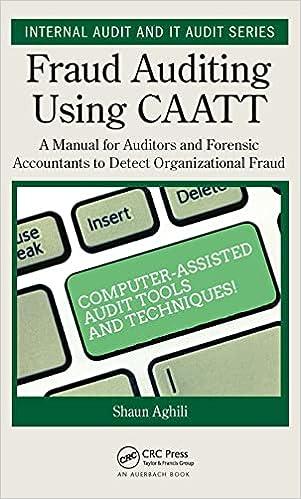Answered step by step
Verified Expert Solution
Question
1 Approved Answer
Direct Materials Variances Alvarado Company produces a product that requires 11 standard pounds per unit. The standard price is $8.00 per pound. If 2,700 units
Direct Materials Variances
Alvarado Company produces a product that requires 11 standard pounds per unit. The standard price is $8.00 per pound. If 2,700 units used 30,900 pounds, which were purchased at $7.6 per pound, what is the direct materials (a) price variance, (b) quantity variance, and (c) cost variance? Enter a favorable variance as a negative number using a minus sign and an unfavorable variance as a positive number.
| Line Item Description | Amount | Variance |
|---|---|---|
| a. Direct materials price variance | $fill in the blank 1 | Favorable |
| b. Direct materials quantity variance | $fill in the blank 3 | Unfavorable |
| c. Direct materials cost variance | $fill in the blank 5 | Favorable |
 Direct Materials Variances Alvarado Company produces a product that requires 11 standard pounds per unit. The standard price is $8.00 per pound. If 2,700 units used 30,900 pounds, which were purchased at $7.6 per pound, what is the direct materials (a) price variance, (b) quantity variance, and (c) cost variance? Enter a favorable variance as a negative number using a minus sign and an unfavorable variance as a positive number. Feedback Check My Work Unfavorable variances can be thought of as increasing costs (a debit). Favorable variances can be thought of as decreasing costs (a credit). Cost variance is the difference between the actual and standard total cost. Direct Materials Variances Alvarado Company produces a product that requires 11 standard pounds per unit. The standard price is $8.00 per pound. If 2,700 units used 30,900 pounds, which were purchased at $7.6 per pound, what is the direct materials (a) price variance, (b) quantity variance, and (c) cost variance? Enter a favorable variance as a negative number using a minus sign and an unfavorable variance as a positive number. Feedback Check My Work Unfavorable variances can be thought of as increasing costs (a debit). Favorable variances can be thought of as decreasing costs (a credit). Cost variance is the difference between the actual and standard total cost
Direct Materials Variances Alvarado Company produces a product that requires 11 standard pounds per unit. The standard price is $8.00 per pound. If 2,700 units used 30,900 pounds, which were purchased at $7.6 per pound, what is the direct materials (a) price variance, (b) quantity variance, and (c) cost variance? Enter a favorable variance as a negative number using a minus sign and an unfavorable variance as a positive number. Feedback Check My Work Unfavorable variances can be thought of as increasing costs (a debit). Favorable variances can be thought of as decreasing costs (a credit). Cost variance is the difference between the actual and standard total cost. Direct Materials Variances Alvarado Company produces a product that requires 11 standard pounds per unit. The standard price is $8.00 per pound. If 2,700 units used 30,900 pounds, which were purchased at $7.6 per pound, what is the direct materials (a) price variance, (b) quantity variance, and (c) cost variance? Enter a favorable variance as a negative number using a minus sign and an unfavorable variance as a positive number. Feedback Check My Work Unfavorable variances can be thought of as increasing costs (a debit). Favorable variances can be thought of as decreasing costs (a credit). Cost variance is the difference between the actual and standard total cost Step by Step Solution
There are 3 Steps involved in it
Step: 1

Get Instant Access to Expert-Tailored Solutions
See step-by-step solutions with expert insights and AI powered tools for academic success
Step: 2

Step: 3

Ace Your Homework with AI
Get the answers you need in no time with our AI-driven, step-by-step assistance
Get Started


